
 Shane Andrews
The Hockey Writers
Shane Andrews
The Hockey Writers
28
Reads
0
Comments
Diagnosing the Avalanche’s Recent Performance
After such an incredible start to the season, the Colorado Avalanche have seemingly started to thaw lately, chalking up two wins in their last eight games (2-4-2 record), and three wins in their last 11 (3-6-2 record). Mood around the fanbase is starting to sour, with the fans growing impatient while the losses start to mount. However, how many of these losses are a result of bad play? Has the team suddenly shifted to a new system that is not getting the desired results?
In an attempt to investigate the play of the team, I’m going to be looking at three major components of the team’s play as of late: their shot differentials (Corsi), expected goal (xG) differential, and the goalies’ performance relative to their expected goals against (xGA). All data used in this article is provided by Natural Stat Trick, and the data used is all situations (not just even strength).
Overview of the Last 11 Games
The Avalanche are a very high scoring team, and at the time of writing this sit second in the NHL with 3.6 goals scored per game. Their defense and goaltending have also been quite impressive, allowing 2.96 goals per game, good for 11th best in the league.
Over this troublesome 11-game stretch, they have been scoring at a rate of 3.54 goals per game (this includes two games in which they scored 7 goals), and have been allowing 3.72 goals per game (ignoring the “winner” in the shootout loss on Dec. 28).
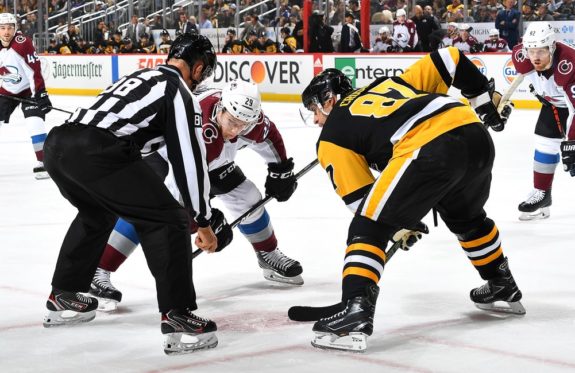
These numbers are obviously worse than their season average, but what is perhaps most worrying is the massive increase in the number of goals allowed per game. For reference, the Detroit Red Wings, the worst team in the NHL, is allowing 3.78 goals per game (and they are truly having an awful season). Has there been a fundamental shift in the way the Avalanche’s defense play the game? Are the goaltenders having a bad couple of games?
Comparing the data we have on this 11-game stretch with the data we have on the 34 games prior to it should hopefully give us some of the answers we are looking for.
Shot Differentials
Over the past 11 games, the Avalanche have, on average, 65.7 Corsi for (CF: shot attempts for) per game, and 53.5 Corsi against (CA: shot attempts against) per game. This means that they were controlling 55.11% of the shot attempts during this span (third best in the NHL behind the Carolina Hurricanes and Vegas Golden Knights).
Prior to this stretch of games, they were generating 57.2 CF per game, and allowing 58.8 CA per game. This means that when they were regularly winning games, they were allowing more shot attempts per game on average than they were producing! They produced 49.32% of the shot attempts during this 34 game stretch, good for the 10th worst in the league (ahead of mostly lottery teams and defensive stalwarts).
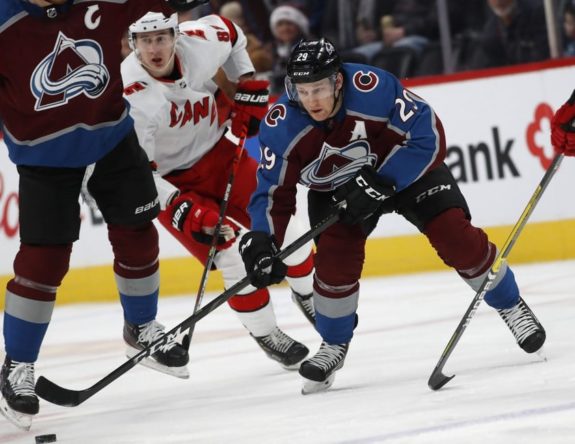
This does not mean that the Avalanche were awful in the first half of their season, though, as not all shot attempts are created equal. When using Corsi as an evaluation tool, shots from the slot and shots from the point both have the same value.
Naturally it is much easier to have a shot attempt from the point, but it is significantly less likely to convert to a goal. If one team gets 20 shots from the slot every night, but allows 40 shots from the point, who do you think is going to come out on top more often than not?
In order to account for the quality of the shot attempts, I’m going to look at the expected goal differential of the Avalanche. Expected goals (xG) is a weighted shot attempt metric that attempts to assign to each unblocked shot attempt the probability that the given shot becomes a goal. It takes into account many factors and there are a number of different models available to the public. If you’re curious, you can find more details about one of the models here.
Expected Goal Differentials
In their past 11 games, the Avalanche have produced an average of 2.96 xG per game, and allowed an average of 2.69 xG per game, good for an expected goals for percent (xGF%) of 52.39%. This places them as the ninth best team in the league in this metric over this time frame.
In their first 34 games, they produced an average of 2.63 xG per game, and allowed an average of 2.58 xG per game, good for an xGF% of 50.48%. This places them as the 13th best team in the league in this stat. Completely average.
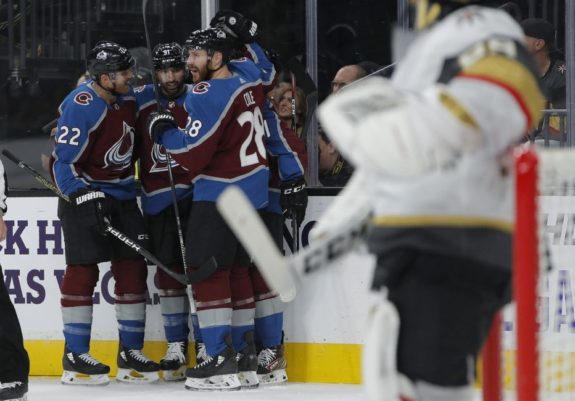
So, what gives? From a statistical standpoint they have been clearly playing better during their last 11 games than their first 34, yet the wins have not been materializing. In general, teams that have a net positive xGF% (i.e., a few percent greater than 50%) win more games than they lose, as you woud expect.
For reference, the best team in the league in terms of xGF% so far this season is the Pittsburgh Penguins at 54.71% (who have been incredible so far this season, despite significant injuries to key players), and they sit fourth overall in the standings.
Goaltending: Does the Problem Lie with Grubauer and Francouz?
Goalies are incredibly hard to predict (just look at Carey Price and Sergei Bobrovsky this season), and advanced statistics regarding them are slightly more limited than for non-goalies. The easiest one to use (besides regular save percentage) is to look as goals saved above average (GSAA). It is the differential of goals allowed and xGA while that goaltender is in net.
Over the last 11 games, Philipp Grubauer has played seven while Pavel Francouz has played four. Over that stretch, they have a .899 SV% and a .898 SV%, respectively. Grubauer, has a GSAA of minus-1.03 over that stretch, while Francouz has a GSAA of minus-0.78. Both goalies have been performing below average for the entire stretch.
These numbers, however, are not awful. Sure, the goaltenders are performing slightly below average, but you can win games with goaltending like this as long as long as you score enough (just look at the 2018-19 San Jose Sharks), and a high powered offensive team like the Avalanche should be able to routinely outscore these goaltending issues.
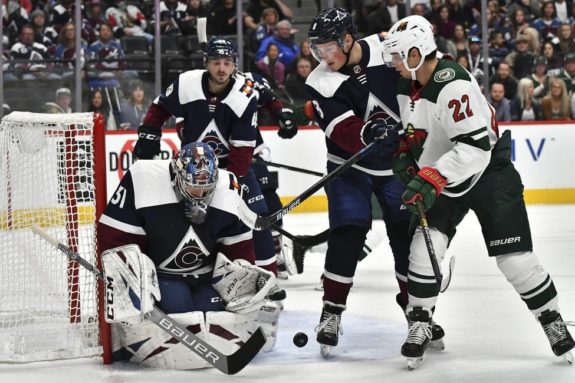
Looking at the first 34 games of the season, Grubauer had a .913 SV% and a plus-1.52 GSAA, while Francouz had a .934 SV% and a plus-10.72 GSAA (fifth-best in the NHL during that stretch). It is clear from this that both goalies (but primarily Francouz) have been struggling quite a bit as of late.
While it is likely that goaltending has impacted their ability to win games, I would argue that the Avalanche’s inability to produce goals at their previous rate has been more of a problem.
Even though they are scoring at roughly the same goal-per-game rate as the beginning of the season, their shooting percentage has dipped considerably (only being saved by the large volume of chances they are creating). Combining this with their weaker goaltending as of late is a recipe for disaster.
Over this stretch, the Avalanche have shot at 9.8%, which is very much an acceptable shooting percentage relative to the rest of the league. However, it is worth noting that this number is a bit higher than we would expect, seeing as how there were two games in which they scored 7 goals on 42 and 38 shots.
Removing these two games lowers their shooting percentage to 7.9%, which would bring them to a bottom-five position in shooting percentage over this stretch. In these games, they hold a record of 1-6-2.
In contrast, in the first 34 games of the season, the Avalanche were shooting at 11.36%, the best in the NHL during that time. If the Avalanche continued to shoot at 11.36% during this rough stretch, they would have scored an extra 11 goals over those 9 games in which they were shooting at 7.9%. Safe to say that would help them win the majority of them.
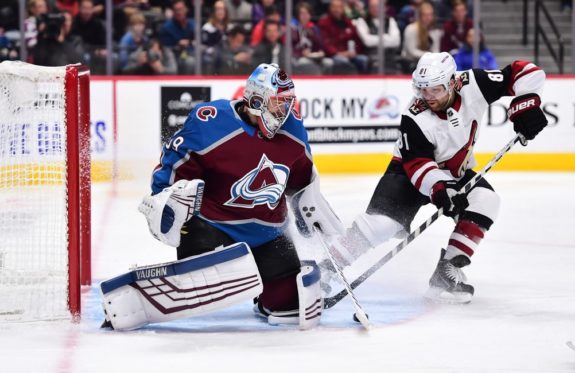
It seems that the Avalanche’s recent struggles have been compounded by a few things going wrong at once. First of which is their shooting luck running a bit dry as of late. Their goal scoring has stayed roughly stagnant, but that is because they have been producing a larger volume of shots compared to their previous games.
Francouz, the team’s best goaltender up until now, has been struggling mightily lately, giving them below-average goaltending, and that has influenced the team’s ability to win games in which he has played.
Grubauer has been more or less consistently average throughout the entire season, so he has more so been an issue as a whole, not just this current rough stretch.
Having these two things happen at the same time is quite unfortunate, but with the amount of talent and skill on the Avalanche, it is likely only a matter of time before their luck starts to turn around and they get back on the right track.
The post Diagnosing the Avalanche’s Recent Performance appeared first on The Hockey Writers.
Popular Articles

















































 Blackhawks Chicago
Blackhawks Chicago Panthers Florida
Panthers Florida Penguins Pittsburgh
Penguins Pittsburgh Rangers New York
Rangers New York Avalanche Colorado
Avalanche Colorado Kings Los Angeles
Kings Los Angeles Maple Leafs Toronto
Maple Leafs Toronto Bruins Boston
Bruins Boston Capitals Washington
Capitals Washington Flames Calgary
Flames Calgary Oilers Edmonton
Oilers Edmonton Golden Knights Vegas
Golden Knights Vegas Senators Ottawa
Senators Ottawa Lightning Tampa Bay
Lightning Tampa Bay Flyers Philadelphia
Flyers Philadelphia Islanders New York
Islanders New York Sabres Buffalo
Sabres Buffalo Red Wings Detroit
Red Wings Detroit Devils New Jersey
Devils New Jersey Hurricanes Carolina
Hurricanes Carolina Blue Jackets Columbus
Blue Jackets Columbus Predators Nashville
Predators Nashville Wild Minnesota
Wild Minnesota Blues St. Louis
Blues St. Louis Stars Dallas
Stars Dallas Jets Winnipeg
Jets Winnipeg Mammoth Utah
Mammoth Utah Sharks San Jose
Sharks San Jose Canucks Vancouver
Canucks Vancouver Ducks Anaheim
Ducks Anaheim






